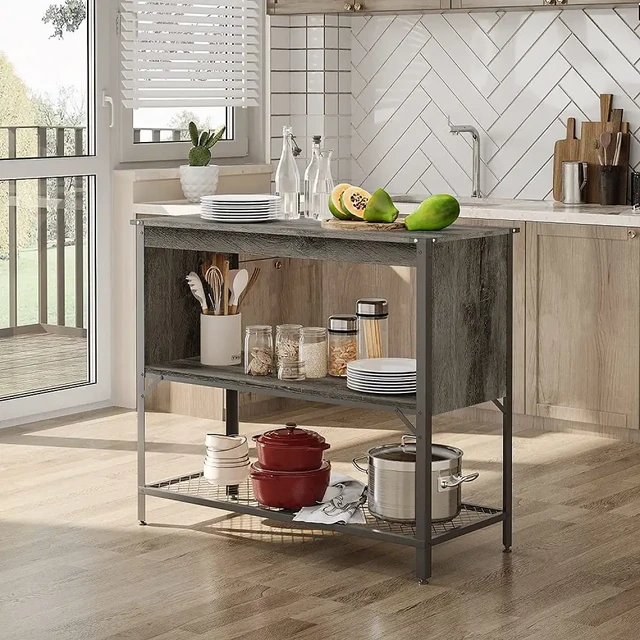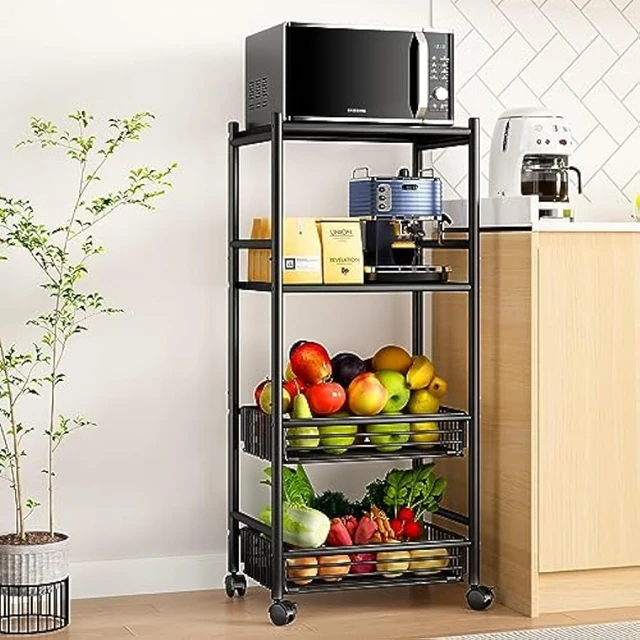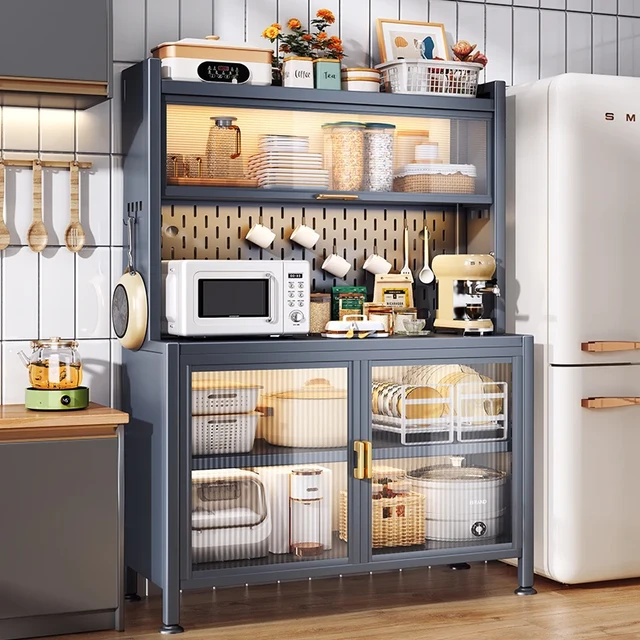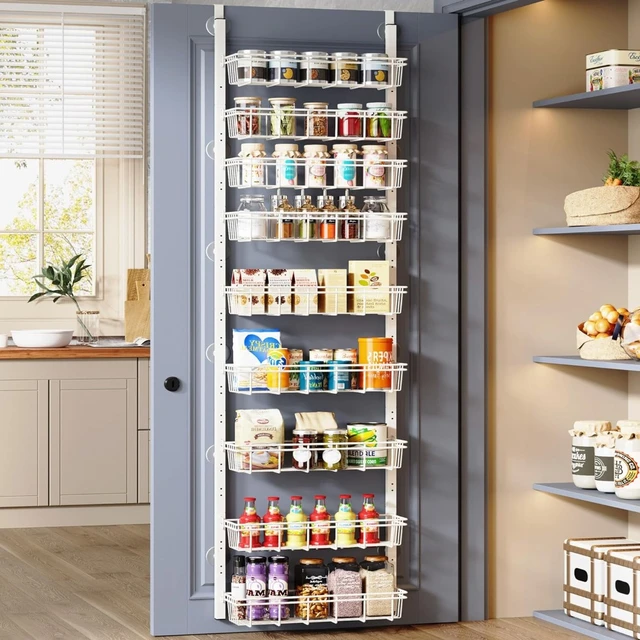 Introduction:
Introduction:
Having a well-organized pantry is essential for efficient meal preparation and storage in any kitchen. However, in small kitchens where space is limited, creating an effective pantry can be a challenge. In this comprehensive guide, we will explore various pantry ideas specifically tailored for small kitchens. From utilizing vertical space to optimizing storage solutions, we will provide practical and creative ideas to help you maximize pantry storage in your small kitchen. By implementing these ideas, you can achieve a clutter-free and functional pantry, even in limited space.
Utilize Vertical Space:
Install Adjustable Shelves:
Use adjustable shelves to make the most of vertical space.
Customize the shelf heights to accommodate different-sized items and maximize storage.
Install Wall-Mounted Shelves:
Install wall-mounted shelves on unused wall space.
They can hold jars, spice containers, and other frequently used pantry items.
Utilize the Back of Cabinet Doors:
Attach hooks or wire racks to the back of cabinet doors to hang small items like measuring spoons, cutting boards, or oven mitts.
This utilizes otherwise wasted space and keeps frequently used items within reach.
 Optimize Storage Solutions:
Optimize Storage Solutions:
Use Stackable Bins or Baskets:
Stackable bins or baskets can be used to group similar items together and optimize vertical space.
They allow for easy access and keep pantry items organized and visible.
Install Drawer Dividers:
Install drawer dividers to create separate compartments for organizing small pantry items like spices, packets, or snacks.
This ensures everything has a designated place and prevents clutter.
Invest in Clear Containers:
Clear containers help maximize space by allowing items to be stacked or nested.
They also create a neat and uniform look while keeping items easily visible.
Creative Storage Solutions:
Use Tension Rods:
Install tension rods vertically between cabinet shelves to create additional storage for baking sheets, cutting boards, or trays.
This keeps these items upright and easily accessible.
Hang a Pegboard:
Hang a pegboard on an unused wall for versatile storage.
Attach hooks or baskets to hold small utensils, measuring cups, or spices.
Utilize Over-the-Door Organizers:
Hang over-the-door organizers on the pantry or cabinet doors.
They are ideal for storing spices, jars, or small items without taking up valuable shelf space.
Pantry Door Storage:
Install a Door-Mounted Spice Rack:
Utilize the inside of the pantry door by installing a spice rack to hold frequently used spices and seasonings.
This frees up valuable shelf space and keeps spices easily accessible.
Add Wire Baskets or Racks:
Attach wire baskets or racks to the pantry door to hold items like foil, plastic wrap, or sandwich bags.
This keeps these items organized and within reach.
Utilize Hanging Shoe Organizers:
Hang a clear, over-the-door shoe organizer on the pantry door.
Use the pockets to store small pantry items like snacks, packets, or even kitchen utensils.
 Make Use of Deep Shelves:
Make Use of Deep Shelves:
Use Lazy Susans:
Lazy Susans are great for utilizing deep shelves.
They allow for easy access to items stored at the back, such as oils, vinegars, or sauces.
Install Slide-Out Shelves:
Install slide-out shelves on deep pantry shelves to maximize accessibility.
These shelves allow you to easily reach items stored at the back without having to remove everything in front.
Use Baskets or Bins:
Use baskets or bins on deep shelves to group items together and prevent items from getting lost in the back.
This makes it easier to pull out the entire basket when needed.
 Installing a sink in a pantry area of a small kitchen can be a viable option:
Installing a sink in a pantry area of a small kitchen can be a viable option:
Installing a sink in a pantry area of a small kitchen can be a viable option, depending on the available space and your specific needs. Here are some considerations to keep in mind:
Space Availability:
Assess the available space in your pantry area to determine if it can accommodate a sink. Measure the dimensions of the area and compare them to the sink’s size requirements, including the width, depth, and height needed for installation.
Plumbing and Water Supply:
Installing a sink will require access to plumbing and a water supply. Consider the proximity of existing plumbing lines and water sources to the pantry area. If plumbing and water connections are not readily available, you may need to seek professional help or make necessary adjustments to accommodate the sink.
Functionality and Purpose:
Determine the intended purpose of the pantry sink. Is it primarily for food preparation, dishwashing, or a combination of both? This will help determine the size and features of the sink, such as a single or double basin, a drainboard, or additional accessories.
Space Optimization:
In a small kitchen, maximizing space efficiency is crucial. Consider a smaller-sized sink or a compact design that fits well within the pantry area. Additionally, look for sinks with built-in storage or accessories that can help optimize storage space in the pantry.
Budget:
Installing a sink involves costs related to plumbing, installation, and the sink itself. Set a budget and consider the expenses associated with the installation, including any necessary plumbing work or modifications to accommodate the sink.
Local Regulations:
Check local building codes and regulations to ensure compliance with any specific requirements or permits needed for installing a sink in a pantry area.
It is advisable to consult with a professional plumber or contractor to assess the feasibility of installing a sink in your pantry area. They can provide guidance based on your specific kitchen layout, plumbing connections, and local building regulations to help determine if a sink installation is a practical and viable option for your small kitchen pantry.
 Conclusion:
Conclusion:
Creating an efficient and organized pantry in a small kitchen is possible with the right ideas and solutions. By utilizing vertical space, optimizing storage solutions, and getting creative with pantry door storage, you can maximize storage in your small kitchen. Implementing these ideas will help you achieve a clutter-free pantry, making meal preparation and storage more convenient. With careful planning and thoughtful organization, your small kitchen can have a functional and efficient pantry that meets all your storage needs.
Remember, efficient pantry organization is about finding what works best for your specific kitchen layout and needs. Experiment with different storage solutions and adjust as necessary to create a well-organized and functional pantry in your small kitchen.


